Kindle Edition articles from The Gurdjieff Journal.
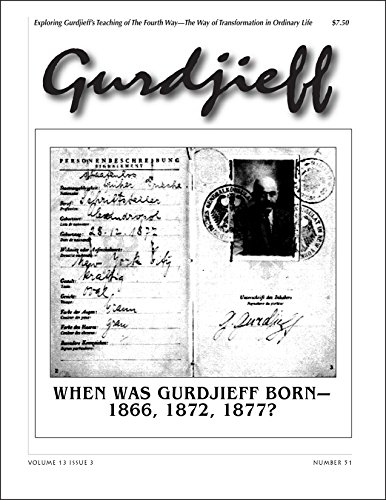 #51 Vol. 13 Issue 3 | When was Gurdjieff Born—1866, 1872, 1877? by William Patrick Patterson One of the many unanswered questions surrounding Gurdjieff is when was he born? As he burned all his private papers and documents before going to America in February 1930, there can be no factual authentication. Many have taken 1877 as the Date, since that is what appears on his passport. One biographer, James Moore, argues for 1866. He bases this largely on Meetings with Remarkable Men (pp. 40–41) where Gurdjieff remarks that "A year or two after he had moved from Armenia, all this wealth that my father had inherited was lost, as a result of a calamity independent of man . . . A cattle plague came from Asia and spread all over Transcaucasia." Gurdjieff then says that "I was then about seven years old . . . " Moore has evidence that in 1872–73 a rinderpest cattle plague developed in the area where Gurdjieff lived, and thus holds that Gurdjieff was born in 1866. |
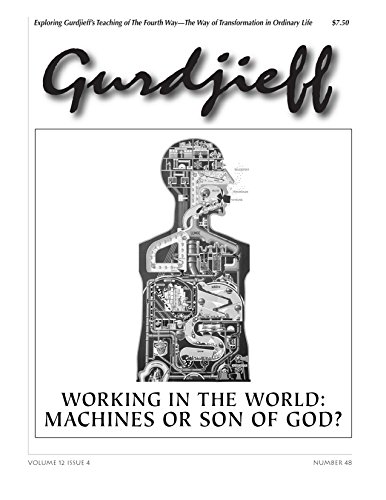 #48 Vol. 12 Issue 4 | Working in the World: Machines or Son of God? by William Patrick Patterson Mr. Gurdjieff says we are “images of God.” He also says we are “machines.” How could we be both images of God and machines? How to understand this? The gulf between the two is so immeasurable the contradiction seems unresolvable, but it isn’t. |
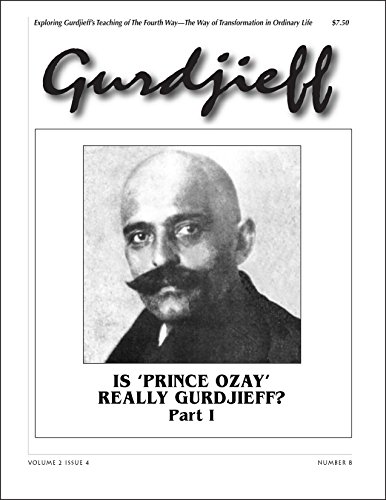 #8 Vol. 2 Issue 4 | Is 'Prince Ozay' Really Gurdjieff: Part I by William Patrick Patterson Paul Dukes, a young Englishman enrolled in the St. Petersburg Conservatoire, was befriended by Lev Lvovitch, a powerful hypnotist known as the "Lion." Lvovitch had served in the army in Central Asia, nearly died, and had been brought back to life by a shaman. Presumably, he learned the art of hypnotism from the shaman. In the winter of 1913, Lvovitch introduced Dukes to a "Prince Ozay," whom Lvovitch said was one "of whom there are but few in the world." |
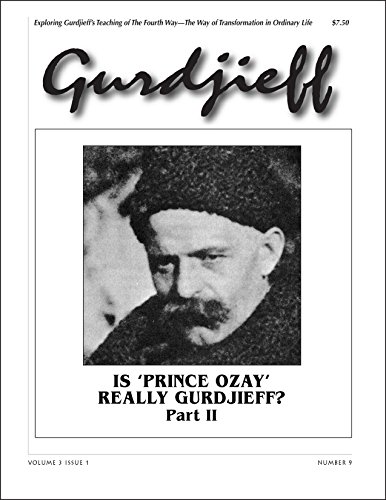 #9 Vol. 3 Issue 1 | Is 'Prince Ozay' Really Gurdjieff: Part II by William Patrick Patterson We present the second excerpt from Paul Dukes, The Unending Quest (Cassell & Co., Ltd., 1950). Paul Dukes, a young Englishman enrolled in the St. Petersburg Conservatoire, was introduced to a "Prince Ozay," of whom, Dukes was told, "there are but few in the world." Was Ozay Gurdjieff? What do you think? |
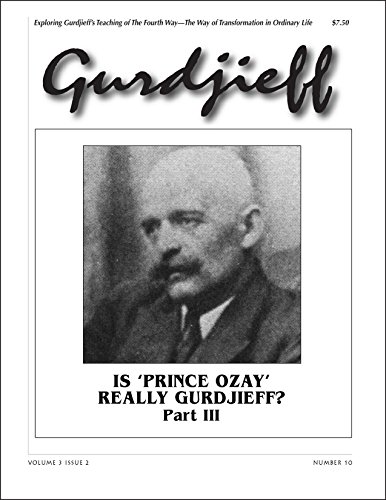 #10 Vol. 3 Issue 2 | Is 'Prince Ozay' Really Gurdjieff: Part III by William Patrick Patterson We present the final excerpt from Paul Dukes, The Unending Quest (Cassell & Co., Ltd., 1950). Paul Dukes, a young Englishman enrolled in the St. Petersburg Conservatoire, was introduced to a "Prince Ozay," of whom, Dukes was told, "there are but few in the world." Was Ozay Gurdjieff? What do you think? |
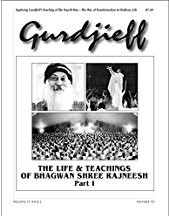 #58 Vol. 15 Issue 2 | The Life & Teachings of Bhagwan Shree Rajneesh: Part 1 by Jean Lauderdale and William Patrick Patterson One of the most influential—and unconventional—Indian spiritual teachers in modern times, integral to the movement toward a blending of Eastern and Western spirituality, was Bhagwan Shree Rajneesh, later known as Osho. Teaching along the fringes of the ancient Indian tradition of world-renunciation, Sannyasa, he poetically merged it with parallels of western psychological and philosophical thought to form a radical doctrine with an abundant and exuberant international following. |
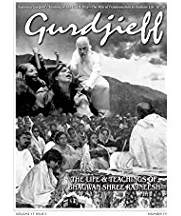 #59 Vol. 15 Issue 3 | The Life & Teachings of Bhagwan Shree Rajneesh: Part 2 by Jean Lauderdale and William Patrick Patterson One of the most influential—and unconventional—Indian spiritual teachers in modern times, integral to the movement toward a blending of Eastern and Western spirituality, was Bhagwan Shree Rajneesh, later known as Osho. Teaching along the fringes of the ancient Indian tradition of world-renunciation, Sannyasa, he poetically merged it with parallels of western psychological and philosophical thought to form a radical doctrine with an abundant and exuberant international following. |
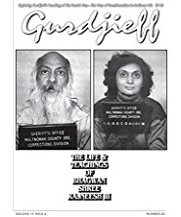 #60 Vol. 15 Issue 4 | The Life & Teachings of Bhagwan Shree Rajneesh: Part 3 by Jean Lauderdale and William Patrick Patterson One of the most influential—and unconventional—Indian spiritual teachers in modern times, integral to the movement toward a blending of Eastern and Western spirituality, was Bhagwan Shree Rajneesh, later known as Osho. Teaching along the fringes of the ancient Indian tradition of world-renunciation, Sannyasa, he poetically merged it with parallels of western psychological and philosophical thought to form a radical doctrine with an abundant and exuberant international following. |
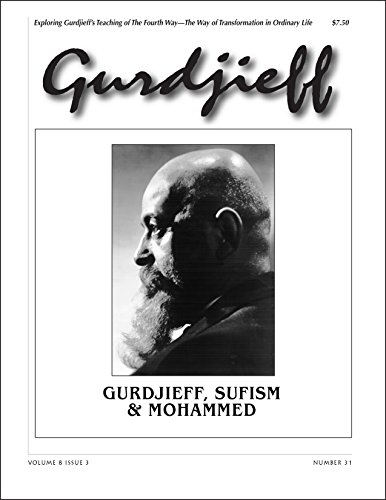 #31 Vol. 8 Issue 3 | Gurdjieff, Sufism & Mohammed by William Patrick Patterson Ever since Mr. Gurdjieff's death, Sufis have claimed him as one of theirs. Either that or claimed that the teaching he brought is really Sufism in disguise. Parallels between Sufism and the ancient teaching of the Fourth Way can be pointed out, of course, certain of his dances, music and perhaps some practices. No one reading the first two series of his Legominism, All & Everything, could doubt his familiarity with and respect for Mohammed, Islam and Sufism. But does that make Gurdjieff a Sufi? |